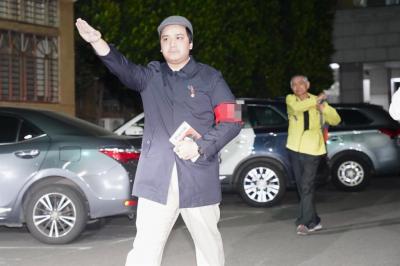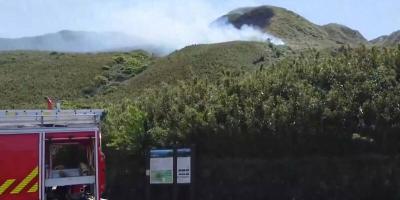A legislative reform bill proposed by Democratic Progressive Party (DPP) legislators yesterday aims to revive an attempt to merge the military’s four arsenals with the Ministry of National Defense-affiliated Chungshan Institute of Science and Technology.
The legislation aims to amend Article 7 and Item 1, Article 33 of the Act for the Establishment of the National Chungshan Institute of Science and Technology (國家中山科學研究院設置條例).
As there is no legal basis for the institute to merge, or not merge with other units, the bill aims to amend the act to allow the institute to merge with other institutions to further national defense research and development, as well as to increase its manufacturing and maintenance capabilities.
A successful review of the bill, scheduled for Tuesday next week, would increase the chances of the amendments being passed in the current legislative session, ministry officials said.
With three to six months of preparation, the merger could be completed by the end of this year, they said.
The 202nd Arsenal manufactures mortars; the 205th Arsenal makes rifles and pistols; the 209th Arsenal builds armored vehicles; and the 401st Arsenal fabricates photonic equipment.
In preparation for the merger, Material Production and Manufacturing Center Commander Major General Luo Yi-chung (羅意中) has tendered his resignation and is to be hired by the institute, the ministry said.
The center and four arsenals have a total of about 3,000 employees, including military personnel, civil servants and contractors, it said.
The merger would take into consideration the rights of all those involved, the ministry said, adding that the institute would take over all assets and debts.
In related news, the nation’s embassy in Eswatini yesterday posted a video on Twitter of a ceremony in which Taiwan gifted the African ally two UH-1H helicopters, commemorating their strong ties.
The UH-1H is being phased out by the army, which said that it would keep six of the helicopters after transferring two to Eswatini.
The ceremony, held on Friday last week, was attended by King Mswati III, Swazi National Chief Defense Officer Prince Hlangusempi and Brigadier General Jeffry Tshabalala, as well as Ambassador to Eswatini Jeremy Liang (樑洪昇) and Deputy Minister of National Defense Chang Guan-chung (張冠群).
King Mswati thanked Taiwan for its long-term assistance, saying that the two helicopters would be deployed to Eswatini’s borders or in humanitarian relief missions, the embassy said.
The king also reaffirmed Eswatini’s support for Taiwan’s participation in UN-related activities.
Additional reporting by Peng Wan-hsin

Taiwan is stepping up plans to create self-sufficient supply chains for combat drones and increase foreign orders from the US to counter China’s numerical superiority, a defense official said on Saturday. Commenting on condition of anonymity, the official said the nation’s armed forces are in agreement with US Admiral Samuel Paparo’s assessment that Taiwan’s military must be prepared to turn the nation’s waters into a “hellscape” for the Chinese People’s Liberation Army (PLA). Paparo, the commander of the US Indo-Pacific Command, reiterated the concept during a Congressional hearing in Washington on Wednesday. He first coined the term in a security conference last

Prosecutors today declined to say who was questioned regarding alleged forgery on petitions to recall Democratic Progressive Party (DPP) legislators, after Chinese-language media earlier reported that members of the Chinese Nationalist Party (KMT) Youth League were brought in for questioning. The Ministry of Justice Investigation Bureau confirmed that two people had been questioned, but did not disclose any further information about the ongoing investigation. KMT Youth League members Lee Hsiao-liang (李孝亮) and Liu Szu-yin (劉思吟) — who are leading the effort to recall DPP caucus chief executive Rosalia Wu (吳思瑤) and Legislator Wu Pei-yi (吳沛憶) — both posted on Facebook saying: “I

Sung Chien-liang (宋建樑), who led efforts to recall Democratic Progressive Party (DPP) Legislator Lee Kun-cheng (李坤城), was released on bail of NT$80,000 today amid outcry over his decision to wear a Nazi armband to questioning the night before. Sung arrived at the New Taipei District Prosecutors’ Office for questioning in a recall petition forgery case last night wearing a red armband bearing a swastika, carrying a copy of Adolf Hitler’s Mein Kampf and giving a Nazi salute. Sung left the building at 1:15am without the armband and covering the book with his coat. Lee said today that this is a serious

Firefighters are working to put out a fire on Taipei’s Yangmingshan (陽明山) reported earlier this morning. The cause of the fire is still under investigation. The Taipei Fire Department said it received a report of a fire at Xiaoyoukeng (小油坑) at 11:17am, dispatching four command vehicles, 16 firetrucks, one ambulance and 72 personnel. The fire is still burning on about 250m² of land, according to initial estimates, as eyewitnesses reported seeing smoke rising from the mountain. The Yangmingshan National Park Headquarters on Facebook said the Qixingshan (七星山) hiking trail starting from Xiaoyoukeng and the Xiaoyoukeng parking lot are closed as firefighters work to put